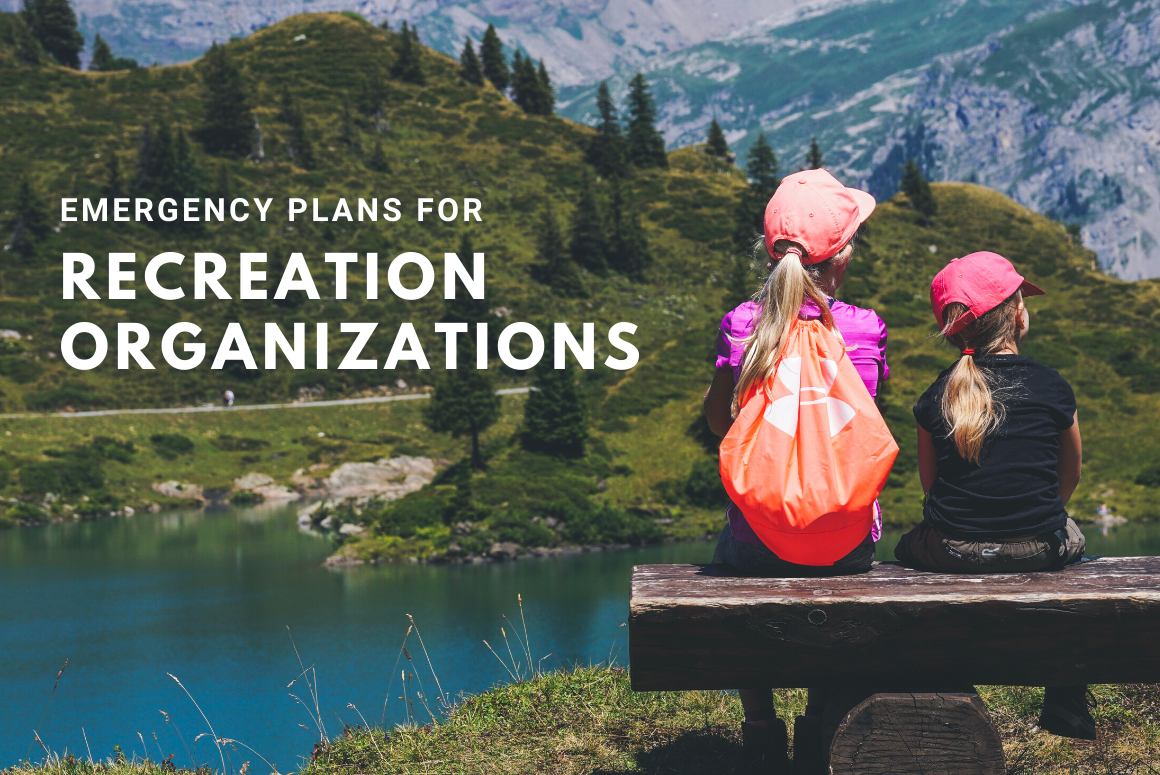Youth recreation organizations know how important participant safety is while kids are enjoying camps, programs, and other recreational activities. Staff have plenty of processes in place to support safety efforts, from collecting critical participant information and staff training, to incident reporting and responding to emergencies. With that in mind, emergency plans for recreation organizations are key and we’ve got some key ways to get those together!
Identify The Risks To Your Organization
Emergency planning, in general, should start with identifying the risks to a region or group of people (i.e. a family or school) and the same goes for your organization. In addition to preparing your staff to respond to participant incidents like injuries or illness, consider these scenarios too:
- Natural disasters like earthquakes, hurricanes, wildfires, or tornadoes.
- Day-to-day emergencies like a power outage or a flood in the community center.
- Community emergencies that may lead to lockdowns i.e. acts of terrorism, active shooter incidents.
Once you’ve identified all the potential emergencies that your staff could face, you can make a plan and gather resources for those that are likely to have the greatest impact on your organization, staff, and participants.
Gather Resources & Provide Training
Your staff will be key to fast, efficient response in an emergency and using your list of priority scenarios from the previous section, you can start to pull together supplies and training to support that plan:
- Provide First Aid, CPR, and AED training – staff are likely to have these as part of their job requirements but refresher courses are helpful, and you might even consider getting other staff trained, like office administrators.
- Put together an emergency kit with supplies to support the participants in any program at any time. For example, all kits should have 72-hours worth of food and water per person, and you might add sleeping bags and small cooking stoves for programs that have space to accommodate.
- Don’t forget to include First Aid kits with all of your emergency supplies. These are important to provide immediate medical care for anyone who might be injured and should be checked regularly to ensure items are up-to-date and fully stocked.
- Make sure that all staff are properly trained on incident and injury reporting so that you have complete, comprehensive record-keeping for the future.
Collect Critical Information
Whether you’re dealing with a day-to-day incident or an emergency, having the right information is key to supporting participants and even staff. Make sure you collect accurate and up-to-date information from everyone you need to, including:
- Medical conditions or concerns to be aware of, especially those that are severe and/or life-threatening
- Emergency contact information in a variety of formats (email, phone, cell)
- Medication or treatment information to support staff and participants if they need it
- Any waivers and consents that might apply to your program or third-parties that your department works with.
Once you’ve collected this information, make sure it’s stored safely and securely, and that it’s easily accessible to authorized program staff so that they can find the information they need as soon as they need it (hint: ePACT can help with this!).
Plan To Communicate
Communication is so important in any scenario as it keeps everyone updated regularly and shares key information to answer specific questions. Many organizations rely on phone trees to update families about an evacuation, emergency, or a bus returning late from a day trip, which is a challenge when phone numbers change or are listed incorrectly for a participant.
Consider using an electronic method, such as email, social media, text messages, or even web notifications, which are much faster at connecting people with one another than traditional methods of communication. Add a backup plan for any of the methods you choose in case one isn’t available when you need it, and share your communication tools/processes with families so they know what to expect before you use them.
For additional information on overall emergency preparedness, check out our other articles – Top 20 Emergency Preparedness Resources and 12 Months of Emergency Preparedness.
Terms and Conditions
All content provided on this blog is for informational purposes only. The owner of this blog makes no representations as to the accuracy or completeness of any information on this site or found by following any link on this site. The owner will not be liable for any errors or omissions in this information nor for the availability of this information. The owner will not be liable for any losses, injuries, or damages from the display or use of this information. This policy is subject to change at any time.

